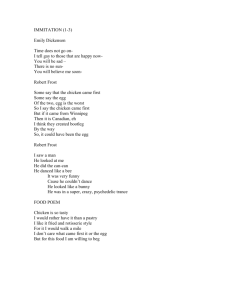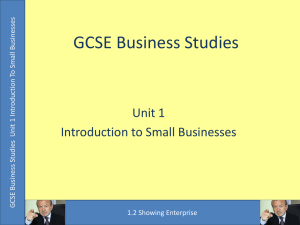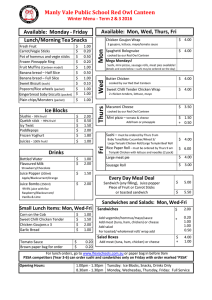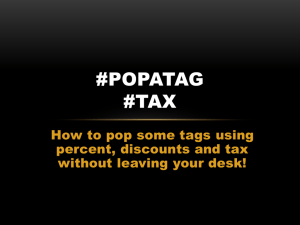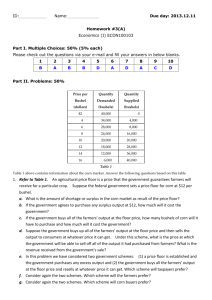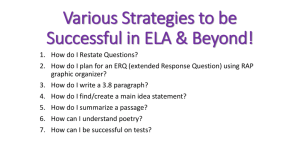Condition, Criteria, Cause and Effect of Internal Auditing
advertisement
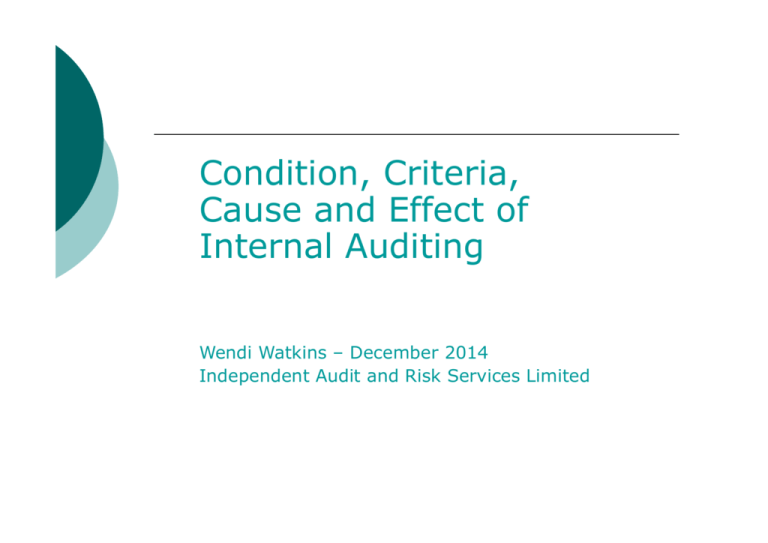
Condition, Criteria, Cause and Effect of Internal Auditing Wendi Watkins – December 2014 Independent Audit and Risk Services Limited Articulating our findings Today I am speaking on: how the disciplines of identifying and articulating Condition, Criteria, Cause, and Effect in our work produces great results; My favourite ‘C’; and how applying this simple technique creates clarity for all audiences. Audit Process Preliminary Planning: Terms of Reference Fieldwork: Review background material / relevant policies and procedures; Interview relevant parties Analyse and compare documentation / data; and Synthesis ideas Reporting So how do we synthesis ideas? Audit report will: detail the findings include recommendations include accountabilities and include agreed timeframes for action Condition? What was found? Criteria? What should be? Policy references Processes Best practices Known ways of working Cause? What caused the condition? Dictionary: a person or thing that gives rise to an action, phenomenon, or condition. Root Cause Needs lots of views and input to form the right view. Effect? What is the impact / risk if this condition continues as it is? If ….(condition) happens this may result in… Focus on Condition Focus on the condition. Important that this is right. Lets Let’s explore some examples… Scenario to think through Fried Chicken business. Stable workforce of 9 staff. 3 staff started within last 3 months. Business been in operation for 10 years. Complaints coming in that chicken making people sick Investigate problem…. Investigate problem Chicken is not being cooked through to the bone. Chicken needs to be cooked through to the bone or people will get sick. Procedures say chicken must be cooked on 120c for 15 minutes. All oven’s have timers and chicken is being cooked for 15 minutes. Lets think about the CCCEs Other Scenarios Medical condition Personal Security Duplicate payments What are the CCCEs Condition? Criteria? Cause? Effect? Order not necessary Think about the CCCEs in any order that makes sense to you. Start with the risk if that works best. How to determine the Cause Brainstorm??? The ‘Whys’ Write down the specific problem. Ask Why the problem happens and write the answer down below the problem. If the answer you just provided doesn’t identify the root cause of the problem that you wrote down in Step 1, ask Why again and write that answer down. Customers are unhappy because they are being shipped products that don’t meet their specifications. 1. Why are customers being shipped bad products? – Because manufacturing built the products to a specification that is different from what the customer and the sales person agreed to. 2. Why did manufacturing build the products to a different specification than that of sales? – Because the sales person expedites work on the shop floor by calling the head of manufacturing directly to begin work. An error happened when the specifications were being communicated or written down. Customers are unhappy because they are being shipped products that don’t meet their specifications. 3. Why does the sales person call the head of manufacturing directly to start work instead of following the procedure established in the company? – Because the “start work” form requires the sales director’s approval before work can begin and slows the manufacturing process (or stops it when the director is out of the office). 4. Why does the form contain an approval for the sales director? – Because the sales director needs to be continually updated on sales for discussions with the CEO. Writing up your findings Contents page Headliner Condition, Criteria, Cause, Effect, Action Benefits Clarity for you Easy to explain and discuss Clarity for your Auditee Clear simple messages Bite size information One condition at a time Easy to refer back to at any time. Questions




